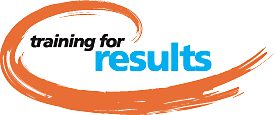In my last article, I spoke about Loose Rein Leadership and the link I saw between western riding and empowering leadership. I would like to expand my learning from this experience further. Retraining my riding style has also taught me about how I learn. I would welcome your thoughts on this.
Leadership for me is an influencing function to motivate others to their best effort. It requires mentoring, coaching, role modelling and encouraging others to create opportunities for growth.
In the past, I have had riding instructors, who have told me what to do. It was a case of ‘heels down, leg back, sit up straight, hands still, etc etc.’ I was bombarded with things to change, often in a fairly intimidating way. My main focus was on staying on (not always very successfully). Having too many things to think about and change at once was difficult and also sapped my self confidence. At times, I gave up thinking for myself and waited to be told what to do.
Leaders in the workplace can inadvertently give people too many things to correct at once, which can cause confusion and low self esteem. The trainee can give up thinking for themselves. By coaching or guiding people to focus on one change at a time, you can get them to take ownership of the change and identify their own options to improve.
Martina Drabkova, Loose Reins, who is teaching me western riding, is more of a guide, who gently gets me to focus on one aspect at a time, explains why she wants me to do it that way, gives me praise when I get that right, and then helps me improve on another aspect. This makes me think for myself and boosts my self confidence. It is a much more harmonious learning environment. Martina also demonstrates by her actions exactly what she expects of me and the horse. She is congruent in her behaviour.
Loose rein leaders can empower people to take ownership of their development and give praise for improvements made. It is also important that they are a role model of the required behaviour and show integrity by being congruent in what they say and do. It is possible to create harmonious learning/change environments. It requires less energy to lead or influence people through change rather than push them.
The other thing that struck me was how much harder it is to learn a new habit when you already have an entrenched old habit. After fifty years of English riding, I now have to learn a completely new style. Under pressure, it is very easy to slip back into my old ways. Martina told me that she finds it easier to train people who have never ridden before than those that have. After a couple of bad falls prior to this, I am also having to learn to trust myself, the horse and trainer again.
As a leader, it is important to be aware that people may find change harder if they have been doing something a certain way for sometime. It may require more support and encouragement until the new habit is embedded. If they have had bad experiences in the past (even if with other people), it may also take time for them to trust you through that change.
In summary, if you want to lead on a loose rein, then:
- Motivate others to their best effort by creating a learning environment
- Only look to improve one aspect at a time
- Encourage the person to take ownership and think for themselves
- Be a role model and congruent in what you say and do
- Praise and support until the new habit is the ‘old’ habit.
If you would like to discuss loose rein leadership, then please contact me
Free Leadership Toolkit Guides Series
Insights into Leadership and Management
Monthly newsletter plus get my free Leadership Toolkit Guides - a continually updated series of short leadership skills guides. Subscribe now.
I send out an email when I publish new "Monthly Morsels" - Insights into Leadership and Management.
Once subscribed you will be sent a link to the Leadership Toolkits download page.

Comments are closed.